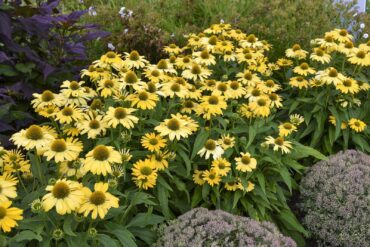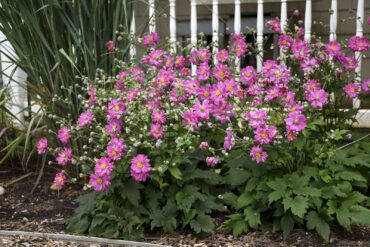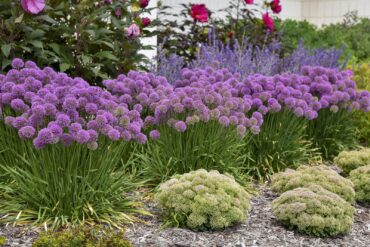
Fall may be a better time to plant perennials than spring. Like spring, fall has cooler, rainier weather that is more conducive to helping plants establish. Unlike spring, fall doesn’t subject freshly planted perennials to the stress of summer heat and the dry spells this can cause.
Here are a few other points to consider if you’re on the fence about fall planting.
Take Time to Evaluate Your Fall Landscape
Fall is an excellent time to assess your garden. It is at the conclusion of watching a full season of your garden perform and at time when plants are freshest in your mind. Compared with spring, everything is at its mature size. This makes it easy for you to see bare spaces or estimate the precise size of something you plan to replace.
By evaluating at the end of the season, you might also find yourself focusing more on fall color. This is a good time to check if your perennials melted away after flowering or if there are a few items still in bloom. Is the foliage chlorotic or riddled with holes from some bug’s dinner? Ensure you get three seasons of interest from your garden by dealing with fall color in fall.

Great Time to Shop for Perennials
Is there a bad time for plant shopping? When you are picking up your mums or ornamental kale, pop over to the perennials department and see what is looking good. How the plant looks in the garden center in fall is usually a good representation of what it will look like every fall. Watch for perennials still in flower or showing a particularly vibrant leaf color.
Garden centers often reward late-season shoppers with a different set of plants from early spring. Late-to-emerge and late-to-flower plants are now stocking the shelves. This time of year also often sees discounts on plants the garden center doesn’t want to overwinter.
Tips to Being a Successful Fall Perennial Planter
1. Plant six weeks before the ground freezes.
Once frost hits, perennials start to go dormant, transferring energy into their roots for the following year. Giving your freshly planted perennials a period to get established in their new home will increase overwintering success. Look up your freeze/frost dates with this helpful tool.
2. Choose plants that are hardy, avoiding those that are less hardy than your zone.
It is safest to plant perennials that are one zone hardier than yours. Generally, your local garden center will only carry perennials hardy to your area, but online retailers may ship to you anyway. Unsure what your zone is? Look it up here.
3. Don’t worry about new growth.
You probably won’t see many new shoots or flowers, but that’s OK. You’re planting this perennial for next year. What you can’t see above the soil is happening below with fine root development.

4. Wait until after a few good hard frosts before cutting them back.
The nutrients stored in the stems and leaves need time to travel into the roots for winter. Removing the top growth too early denies the plant the kickstart it needs to get going in the spring. Unsure if it’s too early to cut back? Leave it till spring.
5. Do not fertilize.
The slow-release fertilizer included in the nursery pot and held in the rootball is more than enough to get plants to winter. Too much nutrition can have adverse effects on the plant and interfere with its transition to dormancy.
6. Provide winter protection.
Mulching with wood chips or leaf litter is a good way to protect the crown of the plant from cold damage in winter.
Ideas for perennials to plant this fall:
- Allium Serendipity: hardiness zones 4-8
- Anemone Fall in Love Sweetly: hardiness zones 4-8
- Butterfly Bush Lilac Cascade: hardiness zones 5-10
- Echinacea Yellow My Darling: hardiness zones 4-8
- Hardy Hibiscus Holy Grail: Hardiness zones 4-9
- Russian Sage Denim n Lace: hardiness zones 4-9
- Rudbeckia American Gold Rush: hardiness zones 4-9
- Panicum Cheyenne Sky: hardiness zones 4-9


























